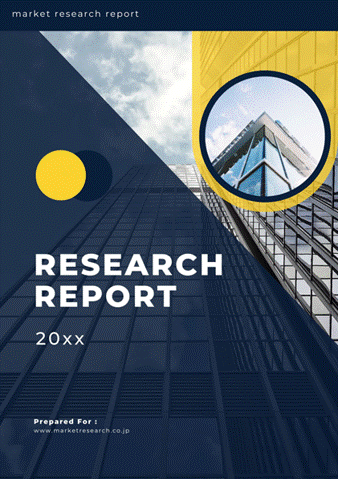 | • レポートコード:B-MOR-05255 • 出版社/出版日:Mordor Intelligence / 2018年4月 • レポート形態:英文、PDF、90ページ • 納品方法:Eメール(受注後2営業日) • 産業分類:ICT |
| Single User(1名様用) | ¥629,000 (USD4,250) | ▷ お問い合わせ |
| Team User(7名様用) | ¥666,000 (USD4,500) | ▷ お問い合わせ |
| Corporate User | ¥1,295,000 (USD8,750) | ▷ お問い合わせ |
• お支払方法:銀行振込(納品後、ご請求書送付)
レポート概要
| 本資料は、長距離識別追跡(LRIT)の世界市場について調べ、長距離識別追跡(LRIT)の世界規模、市場動向、市場環境、プラットフォーム別(オンショア、船舶)分析、プラットフォーム別(CSP、ASP、データセンタープロバイダー)分析、エンドユーザー別分析、アメリカ市場規模、ヨーロッパ市場規模、アジア市場規模、中国市場規模、企業の競争環境、関連企業情報などをまとめた調査レポートです。 ・イントロダクション ・エグゼクティブサマリー ・長距離識別追跡(LRIT)の世界市場インサイト ・長距離識別追跡(LRIT)の世界市場環境 ・長距離識別追跡(LRIT)の世界市場動向 ・長距離識別追跡(LRIT)の世界市場規模 ・長距離識別追跡(LRIT)の世界市場規模:プラットフォーム別(オンショア、船舶) ・長距離識別追跡(LRIT)の世界市場規模:プラットフォーム別(CSP、ASP、データセンタープロバイダー) ・長距離識別追跡(LRIT)の世界市場規模:エンドユーザー別 ・長距離識別追跡(LRIT)の世界市場:地域別市場規模・分析 ・長距離識別追跡(LRIT)の北米市場規模・予測 ・長距離識別追跡(LRIT)のアメリカ市場規模・予測 ・長距離識別追跡(LRIT)のヨーロッパ市場規模・予測 ・長距離識別追跡(LRIT)のアジア市場規模・予測 ・長距離識別追跡(LRIT)の中国市場規模・予測 ・関連企業情報・競争状況 |
The long-range identification and tracking market is expected to register a CAGR of 14.51%, during the forecast period 2018 – 2023.
The marine industry has been on a prosperous path over the recent five year period registering considerable growth across the various sectors within the industry, with ocean shipping in particular being the most prominent contributor towards this growth. The maritime industry has been on the cusp of evolution in response to constant changes in the economic, political, and technological trends governing the growth of the industry. Information exchange forms the basis for different segments within the maritime industry to coordinate with each other, in order to enable smooth functioning. Effective communication between the governing authorities and the vessel out on sea is crucial in ensuring the operation is performed without any major challenge capable of disrupting the entire process.
LRIT has been formally incorporated in 2006 and is actively being used by 46 international flags across the globe for maritime communication and tracking. The system has been designed through the recommendations of the Maritime Security Committee, and has been mandated to be used by passenger and cargo ships alike.
LRIT Emerging as a Key Enabler to Improve Maritime Domain Awareness
The long range identification and tracking systems has been designated to be the standardized tracking system to be adopted by vessels subject to operating on the sea. The system has been authorized by the International Maritime Organization to collect and disseminate information received from the ships subject to the different compliances and regulations. LRIT provides an enhanced level of marine domain awareness that allows unique visibility to report the accurate positions of the vessels and is being actively incorporated in the military and defense sectors, by helping the defense authorities recognize potential threats through the LRIT platforms, which is imminent for coast surrounded economies, such as the US and China among others.
Americas Leading the Race to Incorporate the Technology in the Maritime Division
Major countries have integrated the technology and infrastructure required for incorporating LRIT in the maritime sector, to maintain a track of the vessels and collect data that can be used to gain insights on safety and productivity related to the different routes on the sea. Panama leads the LRIT market, with over 8000 vessels adopting the technology, while other South American countries, such as Brazil, Venezuela, Chile and Ecuador emerging as front runners in the market, and have adopted the technology as early as 2010. Canada was the first SOLAS nation to adopt the technology in 2009, with the US following suit in the very same year. The robust nature of the technology and the standardization capability has propelled its adoption by governments across the globe.
Key Developments In The Market
• November 2017 – Pole Star provides satellite AIS data for the Ocean cleanup. Pole Star contributed detailed ship traffic analytics, with raw data courtesy ORBCOMM, further enabling the Ocean Cleanup to identify shipping volumes through the North Pacific, and prepare for their first deployment into the affected region
Major Players – POLE STAR APPLICATION LIMITED, MORSVIAZSPUTNIK, CHINA TRANSPORTATION TELECOMMUNICATION CENTER, ARSKOM GROUP, BLUETRAKER, FULCRUM MARITIME, MODOOTEL LTD., KEMILINKS INTERNATIONAL PTE LTD., FUPE SYSTEMS AS, among others.
Reasons to Purchase this Report
• To track the growth potential of the LRIT technology and draw a comparative analysis with existing technologies in the maritime tracking market
• Analyzing various perspectives of the market with the help of Porter’s five forces analysis
• The segments that are expected to dominate the market
• Regions that are expected to witness fastest growth during the forecast period
• Identifying the latest developments, market shares, and strategies employed by the major market players
• 3-month analyst support, along with the Market Estimate sheet (in excel)
Customization of the Report
• This report can be customized to meet your requirements. Please connect with our representative, who will ensure you get a report that suits your needs
レポート目次1. Introduction
1.1 Scope of the Study
1.2 Executive Summary
2. Research Methodology
2.1 Study Deliverables
2.2 Study Assumptions
2.3 Research Methodology
2.4 Research Phases
3. Market Insights
3.1 Market Overview
3.2 Porter’s five forces Analysis
3.2.1 Threat of New Entrants
3.2.2 Bargaining Power of customers
3.2.3 Bargaining Power of Suppliers
3.2.4 Threat of Substitute products
3.2.5 Intensity of Competitive Rivalry
3.3 Industry Policies
4. Market Dynamics
4.1 Introduction
4.2 Factors Driving the Growth of the Market
4.2.1 Wide Applications in Defense and Automotive segments
4.3 Factors Restraining the Growth of the Market
4.2.1 High costs of the technology
5. Global Long Range Identification and Tracking Market Segmentation
5.1 By Platform
5.1.1 Onshore-based Platform
5.1.2 Vessel-based Platform
5.2 By Components
5.2.1 Communications Service Providers
5.2.2 Application Service Providers
5.2.3 Data Center and Distribution Providers
5.2.4 Others
5.3 By End-users
5.3.1 Government
5.3.2 Defense
5.3.3 Commercial
5.4 By Region
5.4.1 North America
5.4.2 Europe
5.4.3 Asia-Pacific
5.4.4 Rest of the World
6. Competitive Landscape – Key Vendor Profiles (List not Exhaustive)
6.1 Pole Star Application Limited
6.2 Morsviazsputnik
6.3 China Transportation Telecommunication Center
6.4 Arskom Group
6.5 Fulcrum Maritime
6.6 BlueTraker
6.7 Modootel Ltd.
6.8 Kemilinks International Pte Ltd.
6.9 Fupe Systems AS
*List not exhaustive
7. Investment Analysis
8. Future Market Outlook